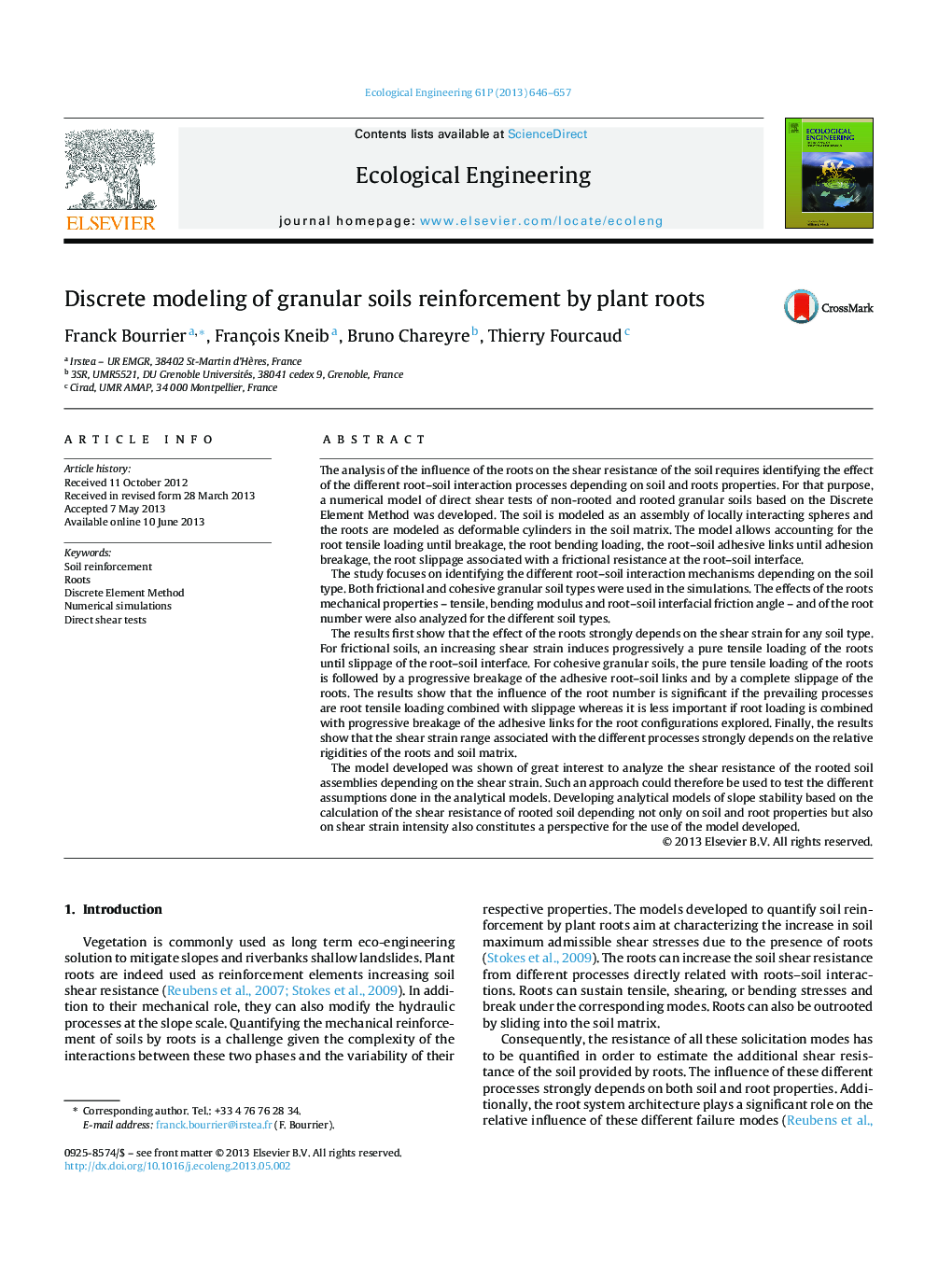| کد مقاله | کد نشریه | سال انتشار | مقاله انگلیسی | نسخه تمام متن |
|---|---|---|---|---|
| 4389633 | 1305136 | 2013 | 12 صفحه PDF | دانلود رایگان |

The analysis of the influence of the roots on the shear resistance of the soil requires identifying the effect of the different root–soil interaction processes depending on soil and roots properties. For that purpose, a numerical model of direct shear tests of non-rooted and rooted granular soils based on the Discrete Element Method was developed. The soil is modeled as an assembly of locally interacting spheres and the roots are modeled as deformable cylinders in the soil matrix. The model allows accounting for the root tensile loading until breakage, the root bending loading, the root–soil adhesive links until adhesion breakage, the root slippage associated with a frictional resistance at the root–soil interface.The study focuses on identifying the different root–soil interaction mechanisms depending on the soil type. Both frictional and cohesive granular soil types were used in the simulations. The effects of the roots mechanical properties – tensile, bending modulus and root–soil interfacial friction angle – and of the root number were also analyzed for the different soil types.The results first show that the effect of the roots strongly depends on the shear strain for any soil type. For frictional soils, an increasing shear strain induces progressively a pure tensile loading of the roots until slippage of the root–soil interface. For cohesive granular soils, the pure tensile loading of the roots is followed by a progressive breakage of the adhesive root–soil links and by a complete slippage of the roots. The results show that the influence of the root number is significant if the prevailing processes are root tensile loading combined with slippage whereas it is less important if root loading is combined with progressive breakage of the adhesive links for the root configurations explored. Finally, the results show that the shear strain range associated with the different processes strongly depends on the relative rigidities of the roots and soil matrix.The model developed was shown of great interest to analyze the shear resistance of the rooted soil assemblies depending on the shear strain. Such an approach could therefore be used to test the different assumptions done in the analytical models. Developing analytical models of slope stability based on the calculation of the shear resistance of rooted soil depending not only on soil and root properties but also on shear strain intensity also constitutes a perspective for the use of the model developed.
• Direct shear tests of rooted soils were modeled using the Discrete Element Method.
• The processes of granular soils reinforcement by roots were identified.
• The stiffness of the roots and soil strongly influence the reinforcement processes.
• Both soil and roots strain–stress relationships should be integrated into analytical models.
• The effect of roots is significant only for large strains.
Journal: Ecological Engineering - Volume 61, Part C, December 2013, Pages 646–657